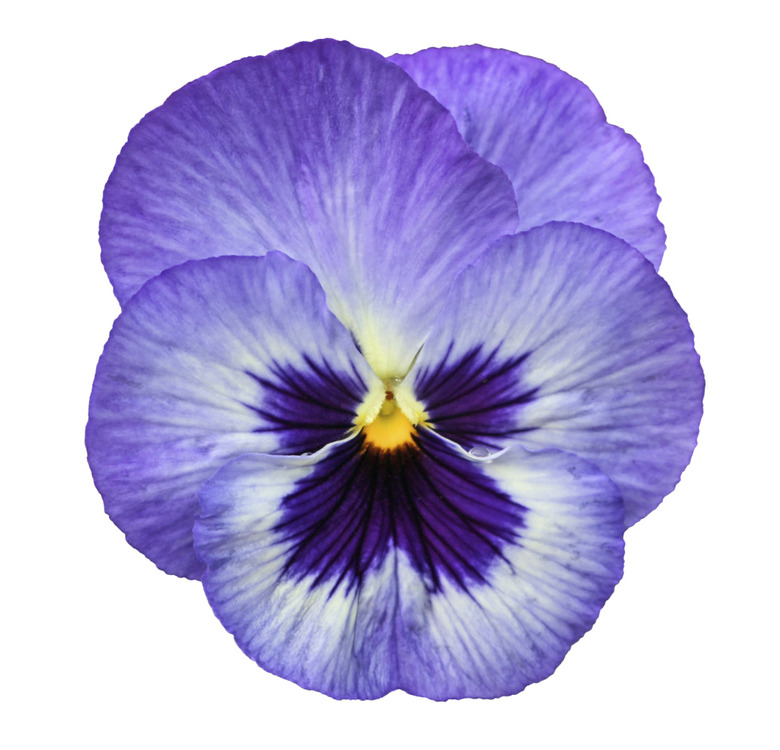How To Tell The Difference Between Pansy And Viola Flowers
Pansies (Viola x wittrockiana) and violas (Viola tricolor) come from the same genus and are often interchangeably referred to as "violas." The two plants are botanically from different species, however.
Pansies (Viola x wittrockiana) and violas (Viola tricolor) come from the same genus and are often interchangeably referred to as "violas." The two plants are botanically from different species, however. To differentiate between these commonly mistaken bedding plants, look closely at their flowers, hardiness characteristics and size.
Plant Origins
Violas are a wildflower native to Europe, and they're more commonly known as Johnny jump-ups in the United States. This species self-seeds better than pansies, allowing the plants to appear in areas throughout the landscape without much attention from the gardener. Pansies are a result from a cross between the wild varieties of violas and tend not to spread as readily.
Growth Requirements
Pansies, which thrive in U.S. Department of Agriculture hardiness zones 5 through 10, are less hardy than violas, which tolerate USDA zones 4 to 10. Both species perform best in moist, well-drained soil rich in organic matter and full sun. Violas can thrive in part shade as well. Though classified as a perennial, pansies are commonly grown as annuals. Violas are better able to overwinter, making them a more reliable biennial or perennial addition to the garden.
- Pansies (Viola x wittrockiana) and violas (Viola tricolor) come from the same genus and are often interchangeably referred to as "violas."
- Violas are better able to overwinter, making them a more reliable biennial or perennial addition to the garden.
Bloom Qualities
The blooms are typically the most obvious feature to distinguish between pansies and violas. Flowers of pansies are larger, more rounded in shape, and they come in a greater variety of colors, including shades of orange, red, pink, blue, violet, yellow and white. Violas produce many more blooms per plant most commonly in shades of blue, yellow, violet and white. The flowers of both species have blooms that can resemble a face, although pansies tend to have a greater contrast between the primary flower color and the darker blotches in the center.
Growth Characteristics
While pansies may reach 6 to 12 inches tall, violas are typically between 3 and 8 inches in height with a spread of 9 to 12 inches. Pansies have a mounded shape in contrast to the spreading habit of violas. Flowers appear on violas from midspring through midfall and on pansies from early fall through early winter and mid- to late spring. The flowering season can be prolonged on both species by dead-heading.
- The blooms are typically the most obvious feature to distinguish between pansies and violas.
- The flowers of both species have blooms that can resemble a face, although pansies tend to have a greater contrast between the primary flower color and the darker blotches in the center.
References
- Cornell University Horticulture Department: Pansy and Viola Overwintering Trial
- University of Tennessee: UT Gardens Plant of the Month
- University of California, Davis: Flowers for Winter Months Pansies
- Botanica; R.G. Turner Jr.
- National Gardening Association: Viola x Wittrockiana
- National Gardening Association: Viola Tricolor
